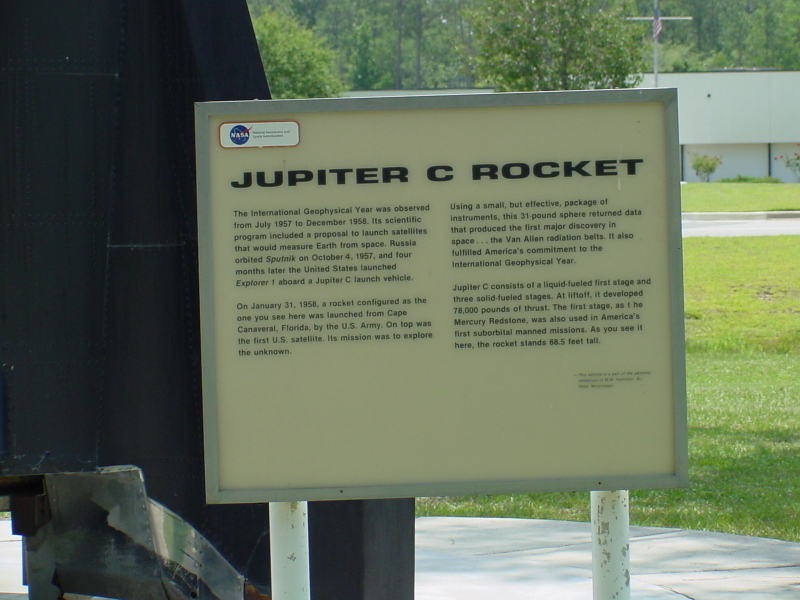| Prev |
heroicrelics.org Stennis Space Center Site Index Rocket Park Gallery |
Next |
dsc06664.jpg
The sign accompanying the Jupiter-C mockup. It reads
Jupiter-C Rocket
The International Geophysical Year was observed from July 1957 to December 1958. Its scientific program included a proposal to launch satellites that would measure Earth from space. Russia orbited Sputnik on October 4, 1957, and four months later the United States launched Explorer I aboard a Jupiter-C launch vehicle.
On January 31, 1958, a rocket configured as the one you see here was launched from Cape Canaveral, Florida, by the U.S. Army. On top was the first U.S. satellite. Its mission was to explore the unknown.
Using a small, but effective, package of instruments, this 31-pound sphere returned data that produced the first major discovery in space ... the Van Allen radiation belts. It also fulfilled America's commitment to the International Geophysical Year.
Jupiter-C consists of a liquid-fueled first stage and three solid-fueled stages. At liftoff, it developed 78,000 pounds of thrust. The first stage, as the Mercury-Redstone, was also used in America's suborbital manned missions. As you see it here, the rocket stands 68.5 feet tall.
Of course, the launch vehicle for the Explorer I satellite was the similar Juno I launch vehicle; the Juno I had three upper stages, while the Jupiter-C had only two.
Both launch vehicles used modified Redstone first stages, as did the Mercury-Redstone, but the Jupiter-C/Juno I first stage differed in a number of respect from the Mercury-Redstone.
And Explorer I was a cylinder, rather than a sphere.

| Time picture taken | Fri Jun 18 12:06:08 2004 |
| Location picture taken | Rocket Park Visitor Center Stennis Space Center, MS |
| Prev | Rocket Park Gallery | Next |